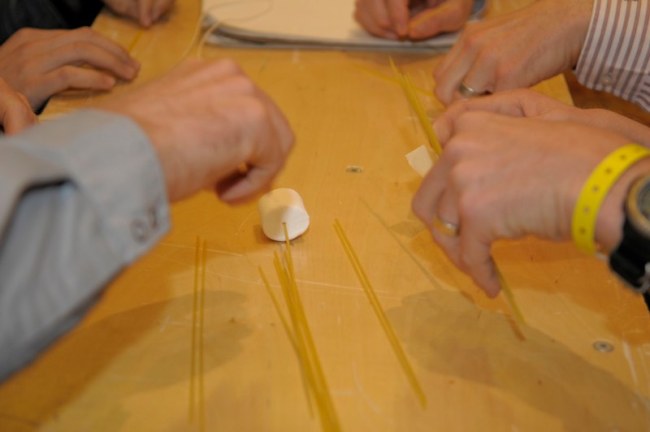By: CDR Michele Day
“An idea that is developed and put into action is more important than an idea that exists only as an idea.”
— Edward de Bono
This month, theATHENAproject is continuing its growth around the globe. On January 15th at the Yokosuka Naval Base Galley, Athena Far East is kicking off their inaugural event. I am especially excited to see the ideas presented at ATHENA Far East – I’ll tell you why in just a bit.
We all know that innovation is fundamentally the process of inventing, introducing, and adopting a new product, practice, system, or behavior. The ability to innovate is impacted by a myriad of factors, some of which are controllable while others are non-controllable. Some people work in an environment that suppresses change or devalues employees who are young and inexperienced. Some people fear failure, think they are not creative enough, or are afraid of speaking publicly.
I’ve been a part of ATHENA since its inception and what an amazing journey it has been. When provided the opportunity to use their VOICE, Sailors are an unstoppable force. An interesting trend I saw in San Diego: The ideas pitched by Sailors were often tied to their parent command’s life cycle. For instance, Sailors who recently returned from deployment expressed ideas more tactical in nature, while those in the shipyard generally had ideas on improving maintenance, and those in the training cycle were focused on streamlining admin and qualifications.

A little throwback picture: The first ever pitch, when Athena was still unfortuntely named WikiWardroom.
As I read through the Roundups from ATHENA events I see the same spread of idea generation. This is why I am so excited about ATHENA Far East! Forward Deployed Naval Forces (FDNF) units are primarily operational. They find time for maintenance and training, but the lifecycle is more fluid than CONUS based forces. FDNF Sailors are always asking “what can we do to be better warfighters?” If you think about it, nearly all of the ideas pitched at ATHENA events can be tied to Warfighting First:
- Streamlining admin allows for more training time.
- Merging databases allows for better tracking of manning and material
- Modernizing training provides warfighters better suited for today’s technological environment
But as I look into my ATHENA Far East crystal ball, I see FDNF Sailors pitching ideas that leverage current technologies to find new ways to execute the mission and conceptualizing new weapons systems.
As ATHENA has continued to grow, we’ve made a constant effort to innovate our own process, trying out new things and gaining feedback to try and make ATHENA better. In our recent events, we’ve experimented with “Shark Tank-style” panels of leaders to provide concept feedback, awarding personal development experiences to our participants and winners, inviting Sailors who have made headway with their projects as keynote speakers and beyond. In that spirit, we’re prototyping a new experience for our first Far East event! Specifically unique to ATHENA Far East is our partnership with the Defense Entrepreneurship Forum (DEF) as an official Agora and our endorsement by and involvement with the Military Writer’s Guild, and SECNAV’s Naval Innovation Advisory Council.

Brett Vaughn, one of the “Sharks” at Athena East 2.0, getting down to business with a presenter as CAPT Carter and CAPT Bodvake look on.
Expanding to Japan is incredibly exciting for not only ATHENA, but the Naval “Innovation Insurgency” as a whole. But beyond that, I think that it’s important to provide a stage for the bright minds currently serving in this Theater to have their voices heard. We hope that you’re as excited about it as we are.
Come see what ATHENA is all about, and join us in making positive change in the Navy! We hope to see you there!
CDR Michele Day is the former Commanding Officer of USS BENFOLD. She’s currently assigned to CTF-70 as the Surface Operations Officer. She’s a proud graduate of Texas A&M and on a never ending journey to grow as a servant leader, positive change instigator, and figuring out how to get her Sailors to ‘give a poop.’
There are loads of Athena Events coming up! If you’re in the San Diego, Groton or Patuxent River areas, connect with us if you want to be a part of our upcoming events! Connect with us on Facebook: www.facebook.com/athenanavy or follow us on Twitter: @AthenaNavy. Interested in starting a movement of your own? Message us, or e-mail athenanavy@gmail.com!
To learn more about Defense Entrepreneurs Agora: http://defenseentrepreneurs.org/about-def-agora/












